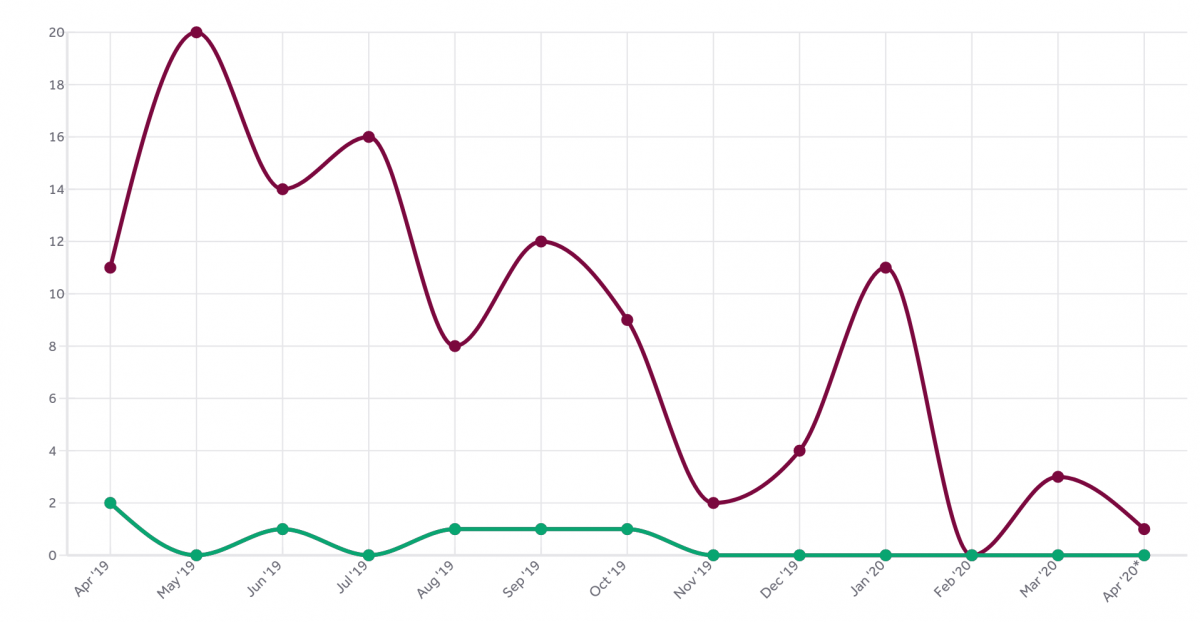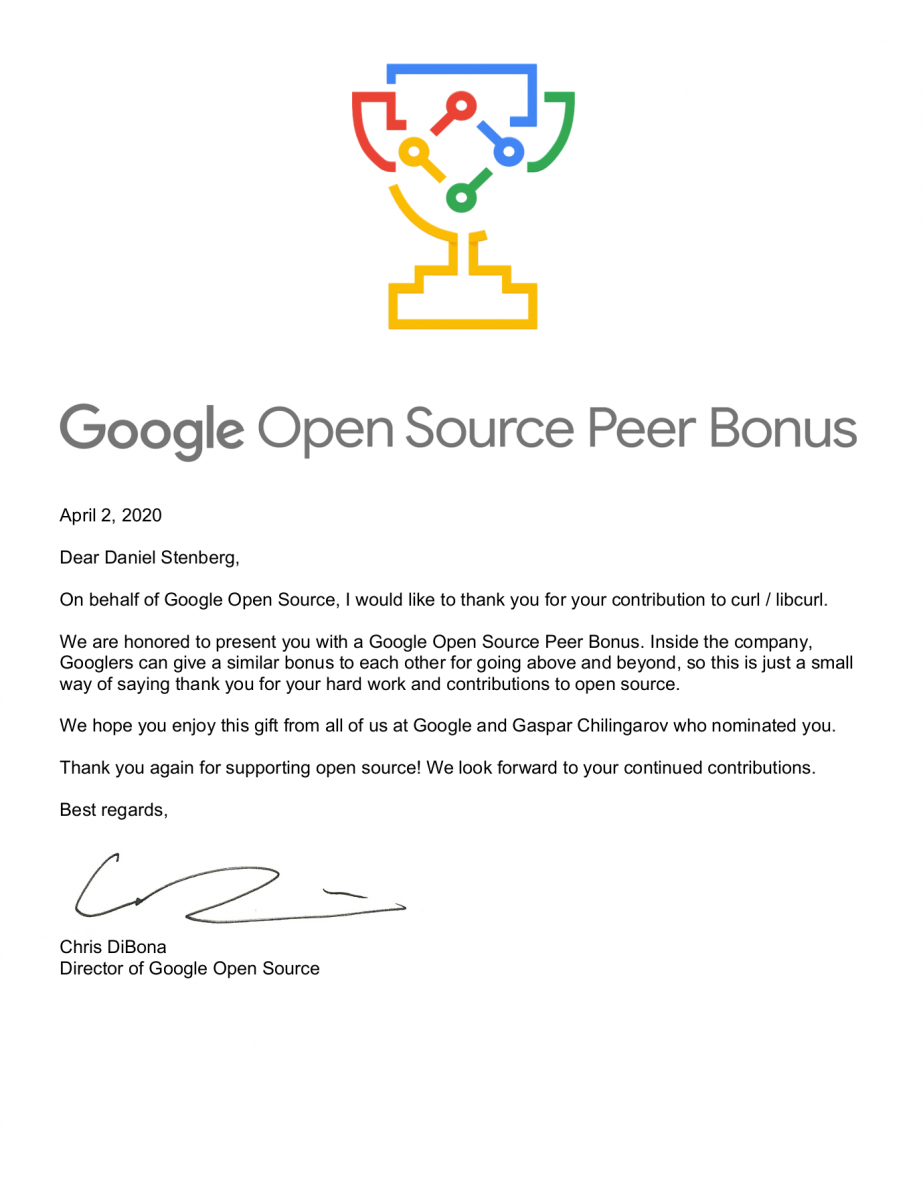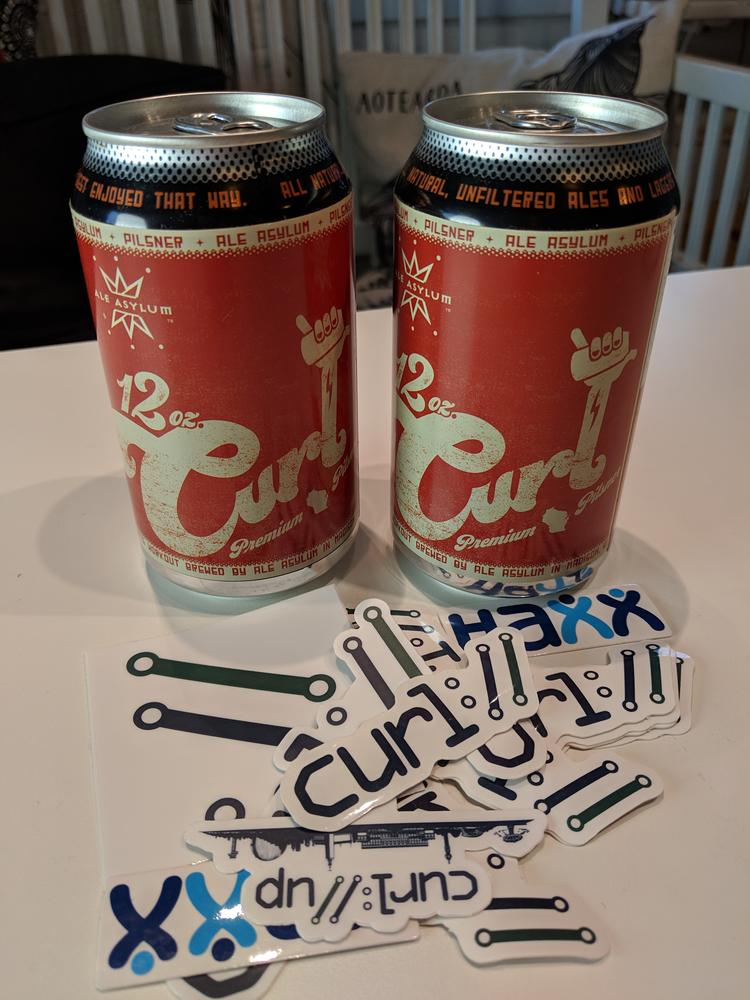This option only has a long version and it is --remote-name-all.
Shipped curl 7.19.0 for the first time – September 1 2008.
History of curl output options
I’m a great fan of the Unix philosophy for command line tools so for me there was never any deeper thoughts on what curl should do with the contents of the URL it gets already from the beginning: it should send it to stdout by default. Exactly like the command line tool cat does for files.
Of course I also realized that not everyone likes that so we provided the option to save the contents to a given file. Output to a named file. We selected -o for that option – if I remember correctly I think I picked it up from some other tools that used this letter for the same purpose: instead of sending the response body to stdout, save it to this file name.
Okay but when you selected “save as” in a browser, you don’t actually have to select the full name yourself. It’ll propose the default name to use based on the URL you’re viewing, probably because in many cases that makes sense for the user and is a convenient and quick way to get a sensible file name to save the content as.
It wasn’t hard to come with the idea that curl could offer something similar. Since the URL you give to curl has a file name part when you want to get a file name, having a dedicated option pick the name from the rightmost part of the URL for the local file name was easy. As different output option that -o,it felt natural to pick the uppercase O option for this slightly different save-the-output option: -O.
Enter more than URL
curl sends everything to stdout, unless to tell it to direct it somewhere else. Then (this is still before the year 2000, so very early days) we added support for multiple URLs on the command line and what would the command line options mean then?
The default would still be to send data to stdout and since the -o and -O options were about how to save a single URL we simply decided that they do exactly that: they instruct curl how to send a single URL. If you provide multiple URLs to curl, you subsequently need to provide multiple output flags. Easy!
It has the interesting effect that if you download three files from example.com and you want them all named according to their rightmost part from the URL, you need to provide multiple -O options:
curl https://example.com/1 https://example.com/2 https://example.com/3 -O -O -O
Maybe I was a bit sensitive
Back in 2008 at some point, I think I took some critique about this maybe a little too hard and decided that if certain users really wanted to download multiple URLs to local file names in an easier manner, that perhaps other command line internet download tools do, I would provide an option that lets them to this!
--remote-name-all was born.
Specifying this option will make -O the default behavior for URLs on the command line! Now you can provide as many URLs as you like and you don’t need to provide an extra flag for each URL.
Get five different URLs on the command line and save them all locally using the file part form the URLs:
curl --remote-name-all https://example.com/a.html https://example.com/b.html https://example.com/c.html https://example.com/d.html https://example.com/e.html
Then if you don’t want that behavior you need to provide additional -o flags…
.curlrc perhaps?
I think the primary idea was that users who really want -O by default like this would put --remote-name-all in their .curlrc files. I don’t this ever really materialized. I believe this remote name all option is one of the more obscure and least used options in curl’s huge selection of options.



















